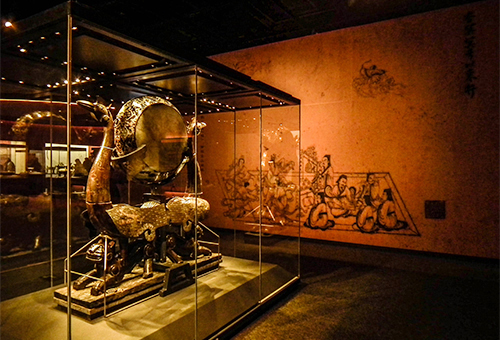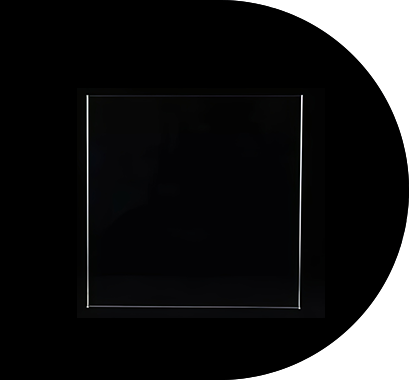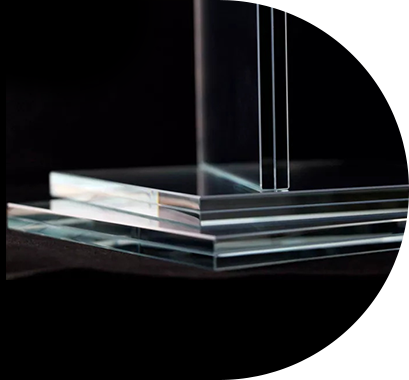When choosing glass for framing artwork, photographs, or collectibles, the type of glass you select can dramatically affect both appearance and preservation. Two common choices are museum glass and regular glass, and while they may appear similar at a glance, they differ significantly in several important ways.
I. Composition and Coating
1. Regular Glass
Regular glass, also called standard or clear glass, is the most basic form of glazing material. It is typically a soda-lime glass without any special coatings or treatments. While it allows for clear viewing, it can reflect light and does not offer protective features.
No anti-reflective coating
No UV protection
Glossy and highly reflective
2. Museum Glass
Museum glass is a premium-grade glass engineered for conservation framing. It usually starts with high-quality low-iron glass and receives multiple layers of advanced optical coatings.
Anti-reflective coatings (virtually eliminates glare)
Up to 99% UV protection (preserves art from fading)
High clarity with color neutrality
II. Visual Clarity and Viewing Experience
Regular Glass:
Standard glass can create visible glare and reflections from surrounding light sources. This can obstruct your view of the artwork, especially in bright or variable lighting conditions.
Museum Glass:
Museum glass has extremely low reflectivity — typically around 1% or less. It often appears as though there is no glass at all. This allows viewers to experience the artwork with true colors, full detail, and minimal distortion.
Visible light transmission: ~97%
Reflectance: ~1% or less
Neutral color rendition: No greenish tint
III. UV Protection
One of the major differences lies in UV filtering capabilities:
Regular Glass: Offers little to no protection against UV rays (typically around 40-50%), which can lead to fading and degradation of artwork over time.
Museum Glass: Provides up to 99% protection against UV radiation, helping to significantly prolong the life and vibrancy of framed items.
This makes museum glass a preferred choice for irreplaceable artwork, rare prints, or documents.
IV. Scratch Resistance and Durability
Regular Glass: Reasonably scratch-resistant but can chip or break more easily due to standard manufacturing.
Museum Glass: Often made from higher-grade materials and finished with durable coatings that resist scratches better, though it’s still glass and must be handled with care.
V. Cost Comparison
Regular Glass: Very inexpensive, making it suitable for posters, student artwork, or temporary displays.
Museum Glass: Significantly more expensive — often 5 to 10 times the price of regular glass — due to the manufacturing process, coatings, and optical performance.
While the cost is higher, the long-term benefits in protection and presentation can justify the investment for valuable pieces.
VI. Common Use Cases
| Use Case | Regular Glass | Museum Glass |
| Posters or temporary art | Affordable and sufficient | Overkill for short-term display |
| Valuable artwork or photos | Poor UV protection and reflection | Maximum protection and visual clarity |
| Museums and galleries | Not acceptable for professional display | Industry standard in conservation framing |
| High-glare environments | Causes distracting reflections | Virtually invisible, ideal for lighting-heavy areas |
VII. Alternative Options Between the Two
If museum glass seems too expensive but you still want some protection and reduced glare, there are mid-range options like:
Conservation Clear Glass: Blocks 99% UV but has glare like regular glass.
Non-glare Glass: Diffuses reflections but may slightly blur image detail.
Acrylic Glazing (e.g., Tru Vue Optium): Lightweight and shatter-resistant with high UV protection, often used in large displays or where safety is a concern.
Summary: Key Differences at a Glance
| Feature | Regular Glass | Museum Glass |
| Anti-reflective | None | Yes (multi-coating) |
| UV Protection | Low (40–50%) | High (up to 99%) |
| Clarity and Color | Some distortion | True color rendering |
| Cost | Low | High |
| Conservation Quality | Not suitable | Ideal |
| Best for | Posters, budget work | Art, photography, heirlooms |

Final Thoughts
Choosing between museum glass and regular glass ultimately depends on what you're framing, where it will be displayed, and how long you want it preserved. For inexpensive or temporary displays, regular glass is a budget-friendly solution. But if you're preserving artwork of emotional, historical, or monetary value, museum glass offers unmatched protection and clarity, making it a worthwhile investment.





